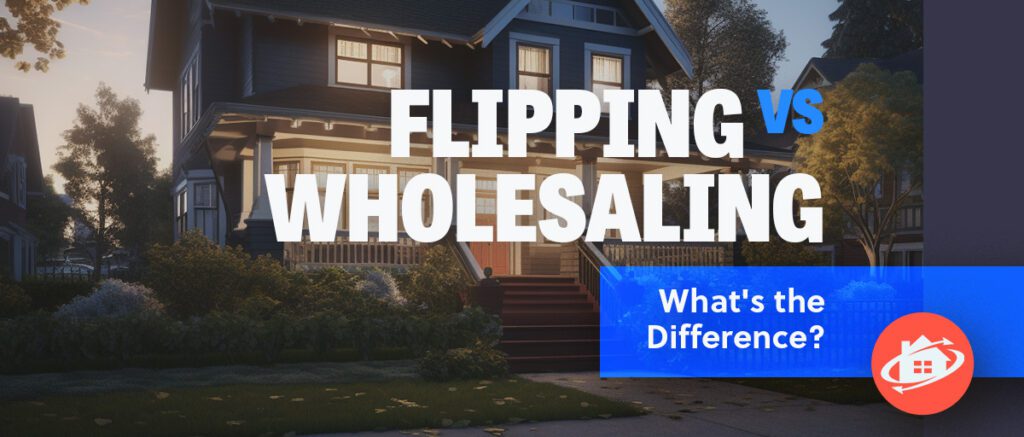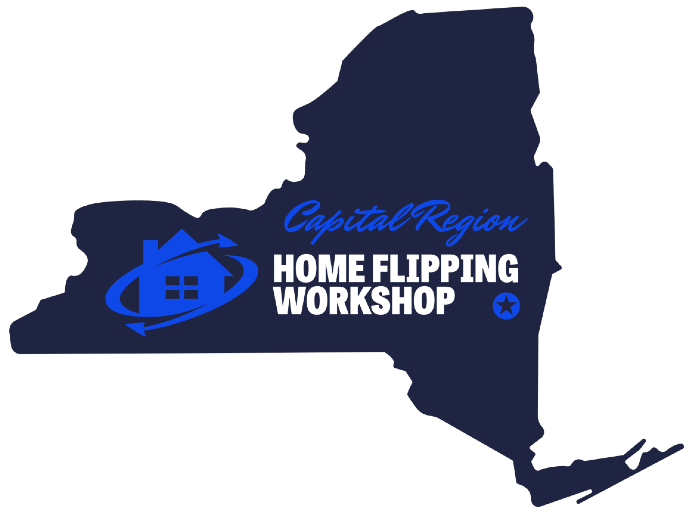Glenn and Amber Schworm are passionate about helping everyday people create their best life through real estate investing. They’ve flipped over 700 houses with complete success valued at over $65 million and counting, and still actively flip over 100 houses a year. Through coaching and mentoring, they have taught thousands of people their simple home flipping formula at their Home Flipping Workshop. Glenn and Amber continue to flip houses as they help everyday people change their lives by teaching them how to “Find, Fund, Fix, Flip and Hold” properties to create immediate cash flow and assets that generate long-term passive income. They live in Schenectady, NY with their four kids.
Flipping vs. Wholesaling: What’s the Difference?
Building wealth through Real-Estate comes in many forms. For you, that’s great news, as it means that you now have a variety of avenues through which you can acquire wealth on the other side of your financial investment.
Two of the most popular forms of investment are “flipping” and “wholesaling”. The popularity of flipping in particular has blossomed in recent years as a result of popular television shows and inspiring “before” and “after” images online.
But is traditional flipping the right route for you and your skillset? Or perhaps you’re better suited for wholesaling? Let’s break down the differences.
Wholesaling and the Art of the “Double Close”
Wholesaling describes buying a house or putting a house under contract and then selling that contract to another cash investor for a profit.
In simple terms, instead of turning over and flipping an entire home, you’re only “flipping” the paperwork.
How does that work? Let’s take a look at an example:
- You come to the realization that a property is being put up for sale. They seek $75,000.
- You do your due-diligence. You use our Home-Flipping Evaluator to determine the potential value and profit margins of flipping the home.
- You offer up the asking price of $75,000 and put it under contract.
- With your knowledge of what the home can be worth to someone looking to flip, you offer up the contract for sale.
- ANOTHER BUYER purchases the contract from you for $95,000 with the plan to flip it themselves, and make a further profit on their end when they sell the property.
By following those simple steps, you’ve now made $20,000 in profit for yourself, quickly, and with very little or no investment of capital on your end. There’s minimal risk, because you never actually own a piece of property. You’re doing what’s called “assigning”.
Wholesaling is legal in nearly every state, and will result in over a million dollars for our company this year just in assignment contracts. Finding a deal, and selling it to somebody else.
The amount made varies from case to case. Most commonly, we make around $18,000 per deal, but the sky’s the limit! We’ve known this particular tactic to be worth in some instances over $250,000 for one commercial building.
Requiring little to no investment of capital, alongside minimal risk and a quick turnaround, it’s a great option for those with the right skill set.
So what is the right skill set?
First and foremost you need to be a fantastic salesperson. An excellent marketer. You need to be quick to find those off-market deals and jump on them before anyone else. Afterwards, once you’ve found the deal, you need to find a cash buyer and work to keep the deal together. Prevent it from being stolen. Ensure you have the right paperwork, and close it outright.
For those willing to put in the work, wholesaling can be a really fantastic source of wealth.
Traditional Flipping: More than What you See on TV
The more commonly known form of flipping is through purchase and renovation. Spending and investing capital into a home with the intent to increase its value, and putting it back onto the market for a sizable profit.
When we first began flipping houses, we decided that we were going to do the work ourselves. While possible, we recommend hiring out contractors to handle the physical work instead, and handling the oversight and management of the project yourself. In doing so, we are able to ensure the best quality work and a beautiful home created and constructed by professionals.
It’s possible to make large amounts of money going this route. For instance you may purchase a house for $95,000 and spend $50,000 on contractors and renovations, bringing your total investment to just under $150,000. From there, selling that house for $200,000 will bring you nearly $50,000 in profit when the dust settles.
The important thing to remember, and perhaps most overlooked by many seeking to begin flipping houses, is that there IS risk involved.
You won’t see it on TV, but in real estate, we make our money when we buy.
The most important thing we teach our students is the way to buy a house correctly. You need to be very intentional when looking at costs to ensure you’re buying at a deep enough discount to make the endeavor worthwhile. If you manage to do that, you can really hedge your bets in such a way that mitigates the risk of the investment.
Because here’s a little tip: You are going to have problems with the renovation.
Perhaps a major error occurs, costing you and your company $10,000. With an anticipated profit of $50,000, an error such as that is no more than a major inconvenience, while still allowing your company to walk away $40,000 richer. However, when you’re expecting only a $10,000 or $20,000 profit from the jump, you’re now looking at the potential for losing money, or worse, breaking even. Profit out the window. By ensuring that you have bought at a deep enough discount, you’re safe in the event of an unforeseen error such as this.
Flipping in the traditional sense is much more labor intensive than wholesaling, but it’s a form of investment in which you hold hard assets; incredibly valuable when taking volatility into account.
Should I Flip? Wholesale? Both?
Flipping and Wholesaling are two fantastic ways of investing into real estate and creating wealth for you and your family.
There is some overlap in the skills required for each. You’ll need a keen sense and understanding of the market, and a useful way of acquiring an evaluation of each property and its potential to both yourself and to buyers as a profitable renovation.
Wholesaling requires a little more work socially in managing people, sales, speaking, and the upkeep of the deal. Little to no investment capital needed, but a whole lot of hustle.
Traditional flipping requires handling budgets and finances, managing personnel, acquiring the initial capital to purchase the property outright, and then pulling it altogether to sell for a profit.
Flipping and Wholesaling may not be easy, but they are both absolutely things that you can do in order to create immediate cash flow and begin your journey toward passive income and wealth.
If you’re interested in learning more and getting a complete guide to real estate investing including Flipping and Wholesaling strategies, come to our next Home Flipping Workshop.


